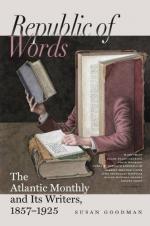The famous cemetery of the Medici, the Sagrestia Nuova, is a ponderous and dismal toy. It is a huge mass of expensive, solemn, and insipid magnificence, erected over the carcasses of as contemptible a family as ever rioted above the earth, or rotted under it. The only man of the race, Cosmo il Vecchio, who deserves any healthy admiration, although he was the real assassin of Florentine and Italian freedom, and has thus earned the nickname of Pater Patriae, is not buried here. The series of mighty dead begins with the infamous Cosmo, first grand duke, the contemporary of Philip ii. of Spain, and his counterpart in character and crime. Then there is Ferdinando I., whose most signal achievement was not eating the poisoned pie prepared by the fair hands of Bianca Capello. There are other Ferdinandos, and other Cosmos,—all grand-ducal and pater-patrial, as Medici should be.
The chapel is a vast lump of Florentine mosaic, octagonal, a hundred feet or so in diameter, and about twice as high. The cupola has some brand-new frescos, by Benvenuto. “Anthropophagi, whose heads do grow beneath their shoulders,” may enjoy these pictures upon domes. For common mortals it is not agreeable to remain very long upside down, even to contemplate masterpieces, which these certainly are not.
The walls of the chapel are all incrusted with gorgeous marbles and precious stones, from malachite, porphyry, lapis-lazuli, chalcedony, agate, to all the finer and more expensive gems which shone in Aaron’s ephod. When one considers that an ear-ring or a brooch, half an inch long, of Florentine mosaic work, costs five or six dollars, and that here is a great church of the same material and workmanship as a breastpin, one may imagine it to have been somewhat expensive.
The Sagrestia Nuova was built by Michel Angelo, to hold his monuments to Lorenzo de’ Medici, duke of Urbino, and grandson of Lorenzo the Magnificent, and to Julian de’ Medici, son of Lorenzo Magnifico.
It is not edifying to think of the creative soul and plastic hands of Buonarotti employed in rendering worship to such creatures. This Lorenzo is chiefly known as having married Madeleine de Boulogne, and as having died, as well as his wife, of a nameless disorder, immediately after they had engendered the renowned Catharine de’ Medici, whose hideous life was worthy of its corrupt and poisoned source.
Did Michel Angelo look upon his subject as a purely imaginary one? Surely he must have had some definite form before his mental vision; for although sculpture cannot, like painting, tell an elaborate story, still each figure must have a moral and a meaning, must show cause for its existence, and indicate a possible function, or the mind of the spectator is left empty and craving.




